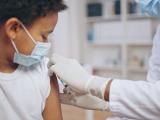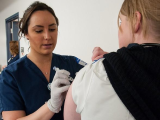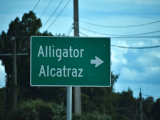May 25, 2012
Med residents lacked PPE knowledge, worked while ill in pandemic, study finds
A study of doctors in training during the height of the 2009 H1N1 pandemic found gaps in personal protective equipment (PPE) knowledge and guidance and that some worked when they were sick. The study, in the American Journal of Infection Control, was prompted by a cluster of influenza-like illnesses in internal medicine residents in June 2009, which led to a National Institute for Occupational Safety and Health (NIOSH) investigation. At the time, flu activity in Utah, the state where the medical school was located, was widespread. The investigators visited the medical school and four affiliated hospitals in September 2009 and conducted an electronic survey of residents about their PPE practices. Researchers also explored records of doctors' contacts with sick patients, peers, community members, and family members and reviewed PPE recommendations that were in place at the time. Of 210 residents, 88 (42%) completed the survey. Thirteen reported flulike illness during the time period, and among 8 who sought medical care, 5 had lab-confirmed influenza A. Among all the respondents, 85% said they had been exposed to the pandemic virus in a variety of settings, and 10 said they had worked while ill. A cluster of 8 illnesses occurred after an internal medicine residency program dinner. Many of those who worked while sick cited professional obligations to patients and coworkers. From 13% to 88% said they knew PPE recommendations for caring for flu patients. During the pandemic, three hospitals deviated from interim federal PPE guidance, partly because of a shortage of N95 respirators.
May 24 Am J Infect Control abstract
Study: 2009 H1N1 infection induces longer-lasting immune response than vaccine
A Chinese study suggests that infection with the 2009 pandemic H1N1 (pH1N1) influenza virus induces a longer-lasting immune response than vaccination against the virus does, though the response lasts less than a year in either case, according to a report yesterday in Vaccine. The researchers followed six groups of participants for 14 months: recipients of one dose of pH1N1 vaccine, recipients of a pH1N1 vaccine followed by a seasonal trivalent flu vaccine, recipients of the same two vaccines in reverse order, and confirmed pH1N1 patients with either (1) no prior vaccination, (2) prior pH1N1 vaccination, or (3) prior seasonal flu vaccination. The authors defined an adequate immune response as an antibody titer of 1:40. For recipients of one dose of pH1N1 vaccine, the mean duration of this immune response was 8.35 months. For those who were infected with the pH1N1 virus, the immune response lasted a mean of 11.8 months, though the peak response was lower than with the vaccine. Prior vaccination with the seasonal vaccine led to a lower antibody response to the pH1N1 vaccine a month after vaccination, while earlier receipt of the pH1N1 vaccine had no effect on response to the seasonal vaccine. Seasonal flu vaccination followed by pH1N1 infection seemed to generate a boosting effect on antibodies to the pH1N1 virus.
May 24 Vaccine report


















